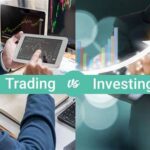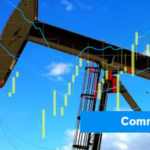
Understanding the Forex market structure is critical to profitable investments in this market. Forex is the foreign market exchange, and the structure refers to patterns and relationships of banks and other participants in the market.
The Forex consists of central banks, commercial banks, hedge funds, brokers, investors, and currency speculators. It’s a decentralized market where two parties trade currencies. Learning some fundamental principles about the market structure can help you develop effective trade strategies that result in profits.
In this article, we’ll explain these categories in more detail. Additionally, we’ll explain the five primary structural components of the Forex market. Learning these will help you understand how to start investing in this market.
5 Structural Components of the Forex Market
The Forex market is the place that sets global currency rates. It is the largest trading market worldwide and trades 24 hours a day, six days a week. When trading in the Forex, investors trade one currency for another. However, there are numerous components to understand before buying foreign currencies. Here are the five primary components of the Forex market structure.
1. Types of Market Structure
Understanding the market structure of Forex is quite complex for many reasons. The Forex contains multiple segments, including the following:
- Spot market – The spot market bases trades instantly. The transactions occur immediately, and investors base them on the current currency rates.
- Forward market – The forward market lets you settle trades for future purchases. You set the price and must purchase within a specified time frame. The goal is to speculate on future currency fluctuations that result in profits.
- Market futures – Market futures are similar to forwards. The difference is you must determine the exact price and time frames to complete the transaction
- Options market – With an options trade, you buy the right to trade two currencies within a specified time. However, you can opt out of the transaction if you decide you don’t want to complete it. This market is primarily made up of traders and investors who want to hedge their exposure to the risks involved with currency trades.
Choosing the right type of trade requires analyzing market conditions. It also requires developing a trading strategy and evaluating a trade’s resistance level. Forex trading is unique when compared to other stock markets in several ways. The primary way is there is no central single marketplace for investors to buy and sell. Instead, there are many trading platforms investors use.
2. Interbank Market
The interbank market structure trading primarily contains large major banks. These are privately owned banks that make very large trades. The trades are generally $1 million or more. These banks use their own money in the trades, but they can also use their customers’ funds if requested. Banks often trade currencies to hedge funds or profit from currency swings. The transactions through this market are not long-term investments. Instead, they generally use this market for overnight trades or those lasting up to six months.
The interbank market is a global network with a daily trading average of $5 trillion. It contains numerous segments, including the spot market, forward market, futures market, and options market.
3. ECN Market
Many people turn to ECN brokers to buy and sell in foreign exchange markets. ECN stands for electronic communication network. An ECN contains orders from market participants. Individuals can use the ECN to execute buy and sell orders. Its main purpose is to help buyers and sellers find each other. Through this market, you eliminate the middleman and can make transactions efficiently. Unfortunately, the ECN market has a few drawbacks. These include high fees, variable spreads, and limited market depth.
4. Retail Market
Interbank foreign exchange trading happens with commercial banks and large investors. However, the retail market structure in Forex is for individual investors who make purchases on a much smaller scale. Anyone can buy and sell currencies by choosing a broker, such as Above the Green Line. Then, you can choose a trading strategy, such as swing trading. A broker can also help you understand the current market sentiment and Forex market structure patterns. What experts think about the current financial market is vital to your investing strategy.
Traders with different backgrounds use this platform for trading currencies. Some traders use this market for fun, while others use it for profits on trades. You’ll find all the different reasons and motivations for using the retail market.
5. Market Trends
Finally, you must evaluate market trends when trading currencies through the Forex. Understanding how to evaluate trends helps you learn when to enter and exit the foreign exchange market. There are three main market trends to understand that can help you make profitable trades:
- Bull market – Investors love bull markets, as they occur when prices hit new swing highs. Purchasing at the start of a bullish trend may result in larger profits.
- Bear market – You can also make money in bearish trends. During a bear market, prices decrease. You can benefit if you predict the right decreases through futures and forwards.
- Sideway market – The trends are harder to define during a sideway market. There aren’t any major trends upward or downward, making predictions more challenging.
Learning how to analyze your trades before purchasing stocks or currency is necessary. You can use various types of analyses, including technical and fundamental. Understanding the impacts of the Federal Reserve, inflation, and other economic conditions is also vital when trading through the Forex or any other market.
Get Started in Forex Trading With Above the Green Line
As you learn the components of the Forex market structure, you’ll gain confidence in trading. Whether you’re a seasoned investor or an amateur, you can start investing in this market through Above the Green Line. Check out our resources today to learn more about the Forex market and other options for investing.






